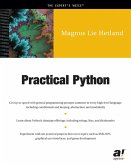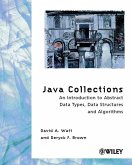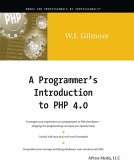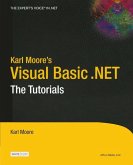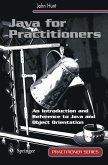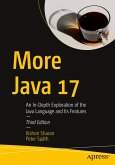This practical book contains comprehensive coverage of the important Collection Library supplied with Java 2. Collections are now built into Java 2 because they provide programmers with incredibly efficient ways to manipulate data. However, given the large number of possible functions and classes in this library, using them correctly is quite difficult. Zukowski gives the Java professional exactly what he or she needs to know (TM) about this vital library.About the author:John Zukowksi is a faculty member of the Magelange Institute, a leading provider of advanced Java training. He is a columnist for JavaWorld magazine and is the guide for Java at About.com. Zukowski has written many popular titles and is the author of the 5-star Definitive Guide to Swing for Java 2 from Apress now in its second edition.
The Collections Framework is supplied with all versions of the Java 2 platform and provides programmers with incredibly efficient ways to manipulate data. However, given the large number of methods and classes in this library, using them correctly is hardly a cakewalk. Well-known columnist and bestselling author John Zukowski gives the Java professional exactly what he or she needs to know about this vital library in order to maximize productivity. This practical book contains comprehensive coverage of the important Collections Framework from the working programmer's point of view, while staying away from academic abstractions.
Java Collections leads you through the standard Java support for maintaining abstract groups of data, from the historical collection classes available since the inception of Java time, through the Collections Framework introduced with the Java 2 platform, and on to third-party alternative libraries for times when the standard support isn't enough. If you're working with data in Java programs, you need to understand the Collections Framework. Let Zukowski's Java Collections be your guide!
The Collections Framework is supplied with all versions of the Java 2 platform and provides programmers with incredibly efficient ways to manipulate data. However, given the large number of methods and classes in this library, using them correctly is hardly a cakewalk. Well-known columnist and bestselling author John Zukowski gives the Java professional exactly what he or she needs to know about this vital library in order to maximize productivity. This practical book contains comprehensive coverage of the important Collections Framework from the working programmer's point of view, while staying away from academic abstractions.
Java Collections leads you through the standard Java support for maintaining abstract groups of data, from the historical collection classes available since the inception of Java time, through the Collections Framework introduced with the Java 2 platform, and on to third-party alternative libraries for times when the standard support isn't enough. If you're working with data in Java programs, you need to understand the Collections Framework. Let Zukowski's Java Collections be your guide!
"...a clearly documented, insightful, comprehensive, and entertaining exploration of the Swing API, complete with the kind of treatment that offers something new to even the most sophisticated Swing developer (yet) is easily accessible to even novice Swing developers...I recommend it highly to anyone who has, or plans to do, any Java user interface development...." DEVYX.COM.
From the reviews:
¿¿a clearly documented, insightful, comprehensive, and entertaining exploration of the Swing API, complete with the kind of treatment that offers something new to even the most sophisticated Swing developer (yet) is easily accessible to even novice Swing developers¿I recommend it highly to anyone who has, or plans to do, any Java user interface development.¿ ¿DEVYX.COM
"The book is about Java's support for dealing with data structures via groups of classes called collections. ... It can be used as a source of examples of good programming practices. ... The book is a good introduction into programming with collections." (Jaroslav Král, Zentralblatt MATH, Vol. 1001, 2003)
¿¿a clearly documented, insightful, comprehensive, and entertaining exploration of the Swing API, complete with the kind of treatment that offers something new to even the most sophisticated Swing developer (yet) is easily accessible to even novice Swing developers¿I recommend it highly to anyone who has, or plans to do, any Java user interface development.¿ ¿DEVYX.COM
"The book is about Java's support for dealing with data structures via groups of classes called collections. ... It can be used as a source of examples of good programming practices. ... The book is a good introduction into programming with collections." (Jaroslav Král, Zentralblatt MATH, Vol. 1001, 2003)


